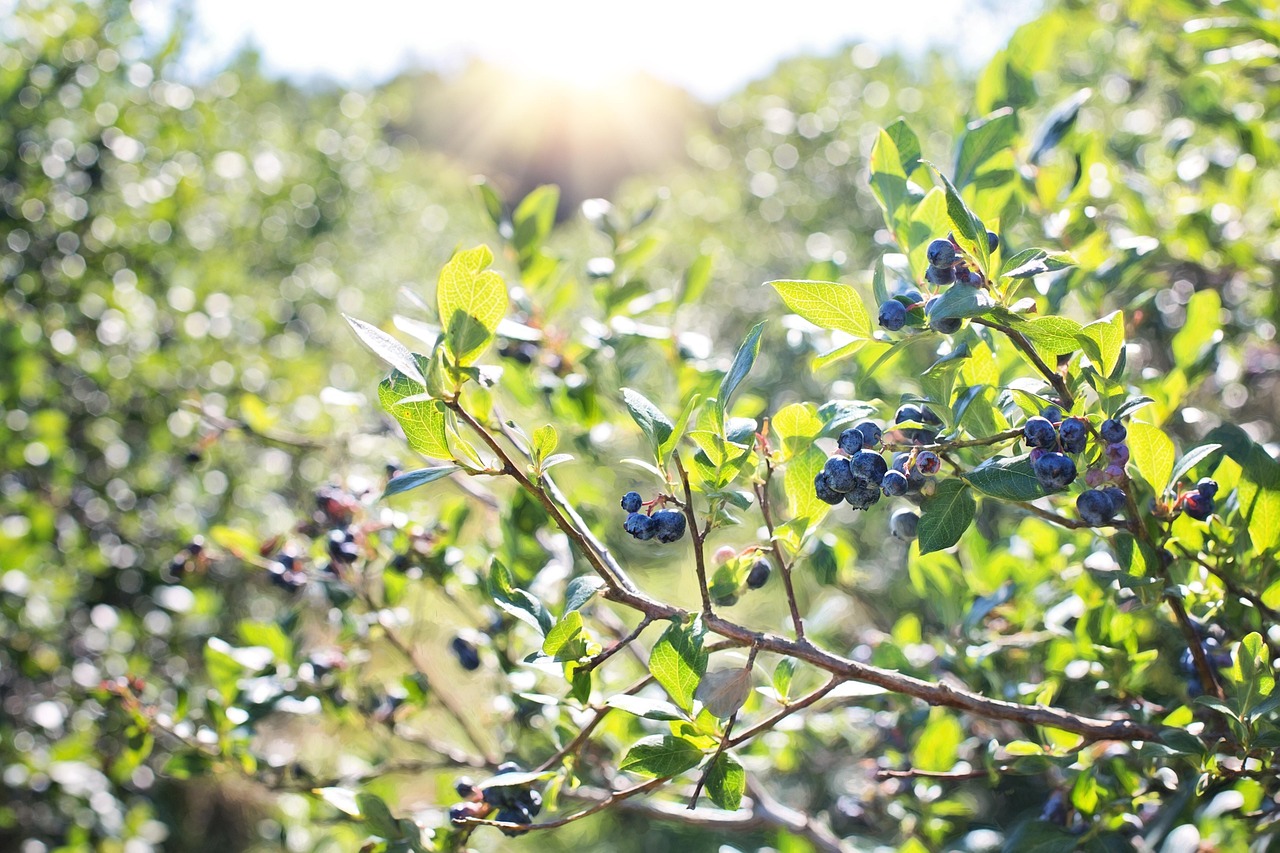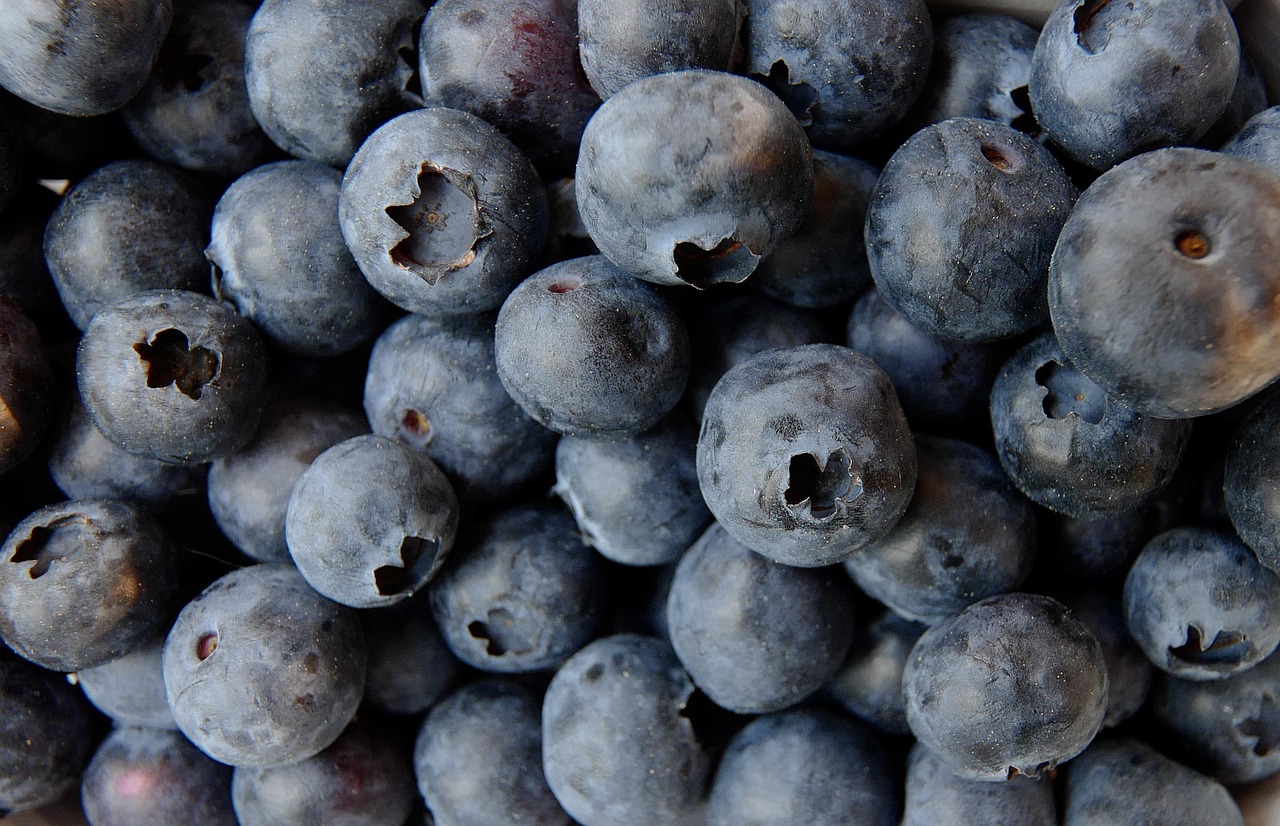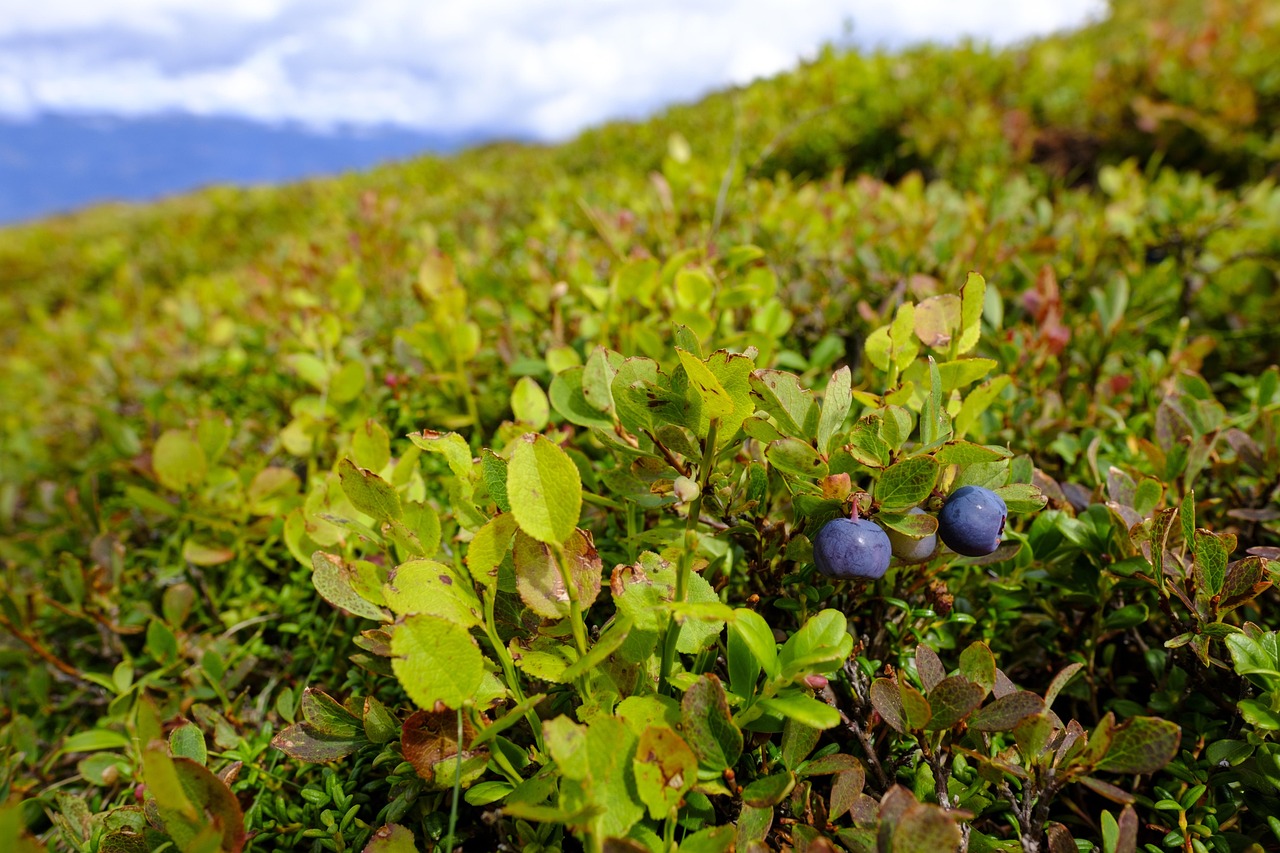Pruning blueberry bushes is essential for promoting compact growth and maximizing fruit production. Proper pruning techniques help shape the plants, enhance air circulation, and encourage healthy new growth, which leads to better yields.
Blueberries are popular among gardeners due to their delicious fruit and health benefits. They thrive in acidic soils and require specific care, especially when it comes to pruning. Pruning is a critical practice that not only improves the health of the bushes but also influences the size and quality of the berries produced. Understanding how and when to prune is vital for anyone looking to cultivate blueberries effectively.

Many gardeners may feel intimidated by the idea of pruning. However, with a little knowledge and practice, it can become a straightforward task. The timing of pruning, the tools used, and the techniques applied will greatly affect the outcome. This guide will help you navigate through these important aspects of blueberry bush pruning.
Understanding Blueberry Bush Growth
Blueberry bushes are perennial plants that can live for many years. Their growth habits differ based on the variety, but they generally exhibit similar patterns. Here are a few key points about blueberry bush growth:
- Blueberry bushes develop new shoots each year.
- They typically grow 3 to 6 feet tall depending on the variety.
- Fruiting occurs primarily on one-year-old wood.
- Older wood tends to produce fewer fruits.
To achieve compact growth, it is important to understand how blueberry bushes develop over time. By knowing which parts of the plant contribute most significantly to fruit production, you can make informed decisions about when and how to prune.

When to Prune Blueberry Bushes
The timing of pruning is crucial for the overall health of blueberry bushes. The best time to prune is during late winter or early spring before new growth begins. This timing allows you to see the structure of the bush without leaves obstructing your view. Here are some guidelines for when to prune:
| Time of Year | Pruning Focus |
|---|---|
| Late Winter (February – March) | Remove dead or damaged wood; shape the bush. |
| Early Spring (March – April) | Thin out crowded branches; encourage new growth. |
Pruning at the right time not only promotes healthy growth but also minimizes stress on the plants. Early spring pruning helps prepare blueberry bushes for an abundant growing season.
Tools Needed for Pruning
Before starting the pruning process, it’s important to gather the right tools. Using sharp, clean tools is essential for making precise cuts without damaging the plant. Here are some tools you should have on hand:

- Hand pruners: Ideal for cutting small branches and stems.
- Loppers: Useful for thicker branches that are difficult to cut with hand pruners.
- Saw: Needed for larger, older wood that requires more effort to remove.
- Gloves: Protect your hands from thorny branches and sharp tools.
Having these tools ready will make the pruning process smoother and more efficient. Clean tools also help prevent the spread of diseases between plants.
Basic Pruning Techniques
Once you have your tools ready and understand when to prune, it’s time to learn some basic techniques. The following techniques will help you achieve compact growth while ensuring your blueberry bushes remain healthy:
- Remove Dead or Damaged Wood: Start by cutting away any dead or broken branches. This helps prevent disease and allows for better air circulation.
- Thin Crowded Branches: If branches are too close together, remove some to improve light penetration and airflow throughout the bush.
- Shape the Bush: Aim for an open center shape that allows light to reach all parts of the bush while maintaining a compact form.
- Cut Back Old Wood: Older wood can be less productive. Cutting back older stems will encourage new growth that produces more fruit.
Implementing these basic techniques will set your blueberry bushes up for successful growth and bountiful harvests. With proper care and attention, your blueberry bushes can thrive for many years, providing delicious fruits and enhancing your garden’s beauty.

Advanced Pruning Techniques for Blueberries
As you become more confident in your pruning skills, you may want to explore advanced techniques that can further enhance the growth and productivity of your blueberry bushes. These methods can help you achieve a more compact and fruitful plant structure, ensuring a successful harvest year after year.
Renewal Pruning
Renewal pruning is a technique used to rejuvenate older blueberry bushes that may be producing fewer fruits. This method involves selectively removing older wood to encourage new growth. Here are some steps to follow for effective renewal pruning:
- Select Old Branches: Identify branches that are more than three years old. These branches typically yield fewer berries.
- Cut Back Older Wood: Prune these older branches to ground level. This encourages the plant to produce new shoots from the base.
- Maintain Balance: Ensure that you do not remove too much wood at once. Aim to retain a balance of older and younger branches for continuous fruit production.
Implementing renewal pruning every few years helps maintain the health and vigor of your blueberry bushes, resulting in better fruit yields.
Pinching Tips for Compact Growth
Pinching is another effective technique for encouraging compact growth in blueberry bushes. This method involves removing the tips of young shoots to promote bushier growth. Here is how to pinch effectively:
- Timing: Pinch young shoots in late spring or early summer when they are actively growing.
- Select Shoots: Choose healthy, vigorous young shoots that are around 6 to 8 inches long.
- Pinch the Tips: Use your fingers or pruners to remove the top inch or two of the shoot. This will stimulate lateral branching.
This technique not only encourages a bushier appearance but also increases the number of flower buds, leading to a more abundant harvest.
Common Mistakes to Avoid
Pruning blueberry bushes can be straightforward, but there are common mistakes that many gardeners make. By being aware of these pitfalls, you can ensure that your pruning efforts are effective and beneficial for your plants.
- Pruning at the Wrong Time: Pruning too late in the season can remove flower buds, leading to reduced fruit yields. Always aim to prune before new growth begins.
- Over-Pruning: Removing too much wood can stress the plant and drastically reduce fruit production. It is better to prune conservatively.
- Ignoring Disease Signs: Failing to remove diseased or damaged wood can spread issues throughout the bush. Regularly inspect your plants for signs of illness.
- Poor Tools Maintenance: Using dull or dirty tools can harm plants and spread diseases. Always keep your pruning tools clean and sharp.
Avoiding these common mistakes will help you maintain healthy blueberry bushes and ensure a fruitful harvest each season.
Seasonal Care After Pruning
After pruning, providing proper care to your blueberry bushes is essential for promoting healthy growth. Here are some key aspects to consider during the growing season:
Watering
Blueberry bushes require consistent moisture, especially during their active growing period. Here are some watering tips:
- Avoid Overwatering: Blueberries thrive in well-drained soil. Ensure that water does not pool around the roots.
- Monitor Soil Moisture: Check the soil regularly. Water when the top inch feels dry.
- Use Mulch: Applying a layer of mulch helps retain moisture and suppress weeds around the bushes.
Nutrient Management
Nutrients play a vital role in the overall health of blueberry bushes. Consider these tips for nutrient management:
- Soil Testing: Conduct a soil test to determine nutrient levels and pH. Blueberries prefer acidic soil with a pH of 4.5 to 5.5.
- Add Organic Matter: Incorporate compost or well-rotted manure into the soil to improve fertility and structure.
- Fertilize Wisely: Use an acid-specific fertilizer formulated for blueberries in early spring to support new growth.
Caring for your blueberry bushes after pruning will help them recover and thrive, setting the stage for a successful growing season filled with delicious fruit.
Pest and Disease Management in Blueberry Bushes
Maintaining healthy blueberry bushes goes beyond pruning and seasonal care. It is equally important to monitor for pests and diseases that can affect the plants. Being proactive about pest and disease management can help ensure a fruitful harvest.
Common Pests of Blueberry Bushes
Several pests can harm blueberry bushes, leading to reduced growth and lower fruit yields. Here are some common pests to watch for:
- Blueberry Maggot: This pest lays eggs in the fruit, causing it to rot. Check for small holes in the berries.
- Spider Mites: These tiny pests suck sap from the leaves, leading to yellowing and stippling. Look for fine webbing on the undersides of leaves.
- Aphids: Aphids can cause leaf curling and distortions. They also secrete honeydew, which attracts ants.
- Japanese Beetles: These beetles eat leaves and blossoms. They can be identified by their metallic green bodies and copper-colored wings.
Regularly inspecting your blueberry bushes for these pests can help you take timely action to mitigate their impact.
Effective Pest Control Methods
There are several methods to control pests on blueberry bushes effectively:
- Natural Predators: Encourage beneficial insects, such as ladybugs and lacewings, that feed on harmful pests.
- Insecticidal Soap: Use insecticidal soap to target soft-bodied pests like aphids and spider mites. Apply it according to the label instructions.
- Neem Oil: This natural pesticide disrupts the life cycle of pests. Apply it during the evening to minimize harm to beneficial insects.
- Hand-Picking: For larger pests like Japanese beetles, hand-picking can be effective. Drop them into soapy water to dispose of them.
Disease Prevention Strategies
Diseases can also pose a significant threat to blueberry bushes. Understanding common diseases and how to prevent them is key to maintaining healthy plants.
Common Diseases Affecting Blueberries
Some of the most prevalent diseases that affect blueberry bushes include:
- Botrytis Blight: This fungal disease causes gray mold on berries, especially in humid conditions.
- Powdery Mildew: A white fungal coating appears on leaves and stems, often during dry weather.
- Cercospora Leaf Spot: Circular purple spots on leaves can lead to early leaf drop.
- Phytophthora Root Rot: This disease affects the roots, leading to poor growth and wilting. It thrives in poorly drained soils.
Disease Management Techniques
Preventing diseases in blueberry bushes requires a combination of cultural practices and treatments:
- Good Air Circulation: Prune bushes to improve air circulation, which helps reduce humidity around the plants.
- Avoid Overhead Watering: Water at the base of the plant instead of overhead to minimize moisture on leaves.
- Use Resistant Varieties: When planting new bushes, choose varieties that are resistant to common diseases.
- Fungicides: If disease outbreaks occur, consider using fungicides recommended for blueberries. Always follow label directions.
The Role of Pollinators
Pollination is essential for fruit production in blueberry bushes. Understanding the role of pollinators can enhance your harvest significantly.
Importance of Pollinators
Blueberries are self-pollinating, but they benefit greatly from cross-pollination. Here are some reasons why pollinators are crucial:
- Bigger Berries: Cross-pollination often results in larger fruit size and a more abundant harvest.
- Better Quality: Pollinated flowers produce higher-quality berries with improved flavor and texture.
- Diversity of Varieties: Planting different varieties attracts various pollinators, enhancing overall productivity.
Attracting Pollinators to Your Garden
You can create an inviting environment for pollinators around your blueberry bushes by implementing the following strategies:
- Plant Wildflowers: Include a variety of flowering plants nearby to attract bees and other pollinators.
- Avoid Pesticides: Limit pesticide use during flowering periods to protect beneficial insects.
- Create Habitat: Provide natural habitats with nesting sites, such as small brush piles or undisturbed areas.
A thriving population of pollinators will help ensure that your blueberry bushes yield plenty of delicious fruit each season.
Maintaining Blueberry Bushes for Long-Term Success
In addition to pruning, pest management, and attracting pollinators, there are several other practices that can help maintain the health and productivity of your blueberry bushes over the long term. These practices ensure that your plants remain vigorous and continue to produce delicious berries for years to come.
Proper Mulching Techniques
Mulching is an effective way to retain moisture, suppress weeds, and improve soil quality around blueberry bushes. Here are some best practices for mulching:
- Choose the Right Material: Use organic materials such as pine bark, wood chips, or shredded leaves. These materials not only conserve moisture but also contribute nutrients as they decompose.
- Apply a Thick Layer: Aim for a mulch depth of 2 to 4 inches. This thickness will effectively suppress weeds while allowing moisture to penetrate the soil.
- Avoid Contact with Stems: Keep mulch away from the base of the plants to prevent rot and discourage pests.
Regularly replenish the mulch layer as it breaks down over time. This practice will help maintain the right conditions for your blueberry bushes.
Seasonal Adjustments
Blueberry bushes may require adjustments in care as the seasons change. Here are some considerations for each season:
- Spring: Focus on pruning and fertilizing early in the season to support new growth. Ensure adequate watering as temperatures rise.
- Summer: Monitor for pests and diseases actively. Ensure consistent watering during hot months, especially while the berries are ripening.
- Fall: After harvesting, remove any fallen leaves and fruit debris to prevent disease. Consider applying a layer of mulch before winter sets in.
- Winter: Protect plants from extreme cold by covering them with burlap or straw if necessary. Avoid pruning during this dormant phase.
Harvesting Tips
Harvesting blueberries at the right time is crucial for maximizing flavor and quality. Here are some tips for effective harvesting:
- Timing: Wait until the berries are fully ripe, which is indicated by a deep blue color and a slight give when gently squeezed.
- Gentle Handling: Be careful when picking to avoid damaging the berries or the plant. Use a gentle twisting motion to detach the fruit.
- Harvest Regularly: Blueberries ripen at different times. Check your bushes every few days during peak season to collect ripe fruit.
Final Thoughts
Pruning blueberry bushes for compact growth is an essential practice that enhances both the health of the plants and the quality of the fruit they produce. By understanding the fundamentals of pruning, pest management, disease prevention, and seasonal care, you can cultivate a thriving blueberry garden that yields abundant harvests year after year.
As you embark on your blueberry gardening journey, remember that patience and attention to detail are key. Each year will bring new lessons and opportunities for improvement. Implementing the techniques discussed in this article will set you on a path toward successful blueberry cultivation.
With proper care and dedication, your blueberry bushes will not only provide delicious fruit but also enhance your garden’s beauty and biodiversity. Embrace the joy of gardening, and enjoy the fruits of your labor as you savor the sweet rewards of your well-maintained blueberry bushes.
